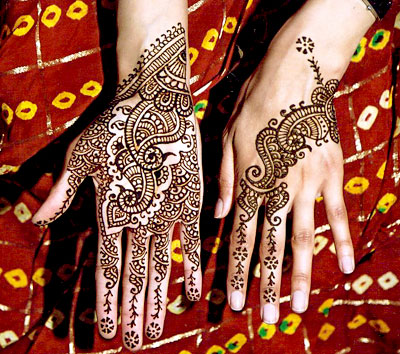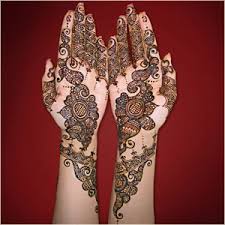Henna (
Lawsonia inermis) is a
flowering plant used since antiquity to dye skin, hair, fingernails,
leather and
wool. The name is also used for
dye preparations derived from the plant, and for the art of temporary
tattooing based on those dyes. Additionally, the name is misused for other skin and hair dyes, such as
black henna or
neutral henna, which do not derive from the plant.
The English name "henna" comes from the
Arabic حِنَّاء, pronounced [ħɪnˈnæːʔ] or colloquially حنا.
www.hennapage.com
www.hennaforhair.com
www.mehandi.com





.jpg)










